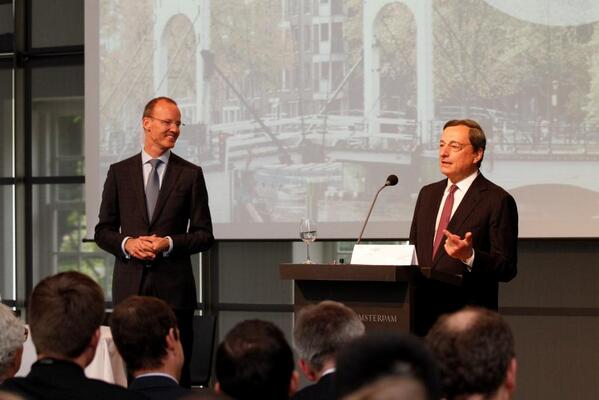Experienced Investor
Waiting for Mario: Why this week’s ECB meeting is crucial for investors

Henderson’s head of global equities, Matthew Beesley, explains why investors are so eagerly anticipating Thursday’s European Central Bank Meeting.
Has there ever been a meeting of the European Central Bank (ECB) that has been so eagerly anticipated, but equally when expectations for action have been so significantly elevated?
According to Bloomberg, consensus expectations are for interest rates to be cut to 0.1%, rates on the marginal lending facility to move down from 0.75% to 0.60% and the rate on the deposit facility to go negative. In addition, again according to a Bloomberg poll, it seems that a significant portion of investors also expect some element of a further long term refinancing operation (LTRO) and/or a programme of asset purchases.
To some extent the ECB has some significant room to grow its balance sheet. After all, this has risen by only around 50% in the last five years relative to expansionary moves at the Bank of England and by the Federal Reserve that have seen more than a tripling in their respective balance sheets since the start of the global financial crisis. Is now the time for some catch-up activity?
With the US Federal Reserve winding down its purchases and recent eurozone economic data having been relatively okay, it might seem like strange timing to be considering monetary easing and some additional unconventional policy. After all unemployment in Germany is holding steady at 6.7% (seasonally adjusted), the European Commission’s Consumer Confidence indicator is at a five-year high and purchasing managers’ indices across much of Europe are above 50 (>50 indicates expansion), yet in aggregate showing the slowest rate of growth in six months.
The problem is inflation, or lack of it, and the euro. Eurostat data this week showed euro area annual prices moved up just 0.5% in May (flash estimate). As for the euro, while it is off its near 1.40 highs from earlier in May, a rate of 1.25 is seen as much more accommodative and would likely be a key beneficiary of a (re)introduction of more unconventional monetary policy.
But expectations are elevated and it is against this backdrop that ECB president Mario Draghi will need to deliver a series of monetary easing moves to abate his, and indeed the broader markets’, concerns that the eurozone is sliding towards deflation. More importantly for near-term stock market direction, investors have been primed to expect action by Mr Draghi himself from his May press conference.
Having warned us of the spectre of deflation, Draghi and the ECB now need to convince us that they have a credible plan to tackle this challenge.